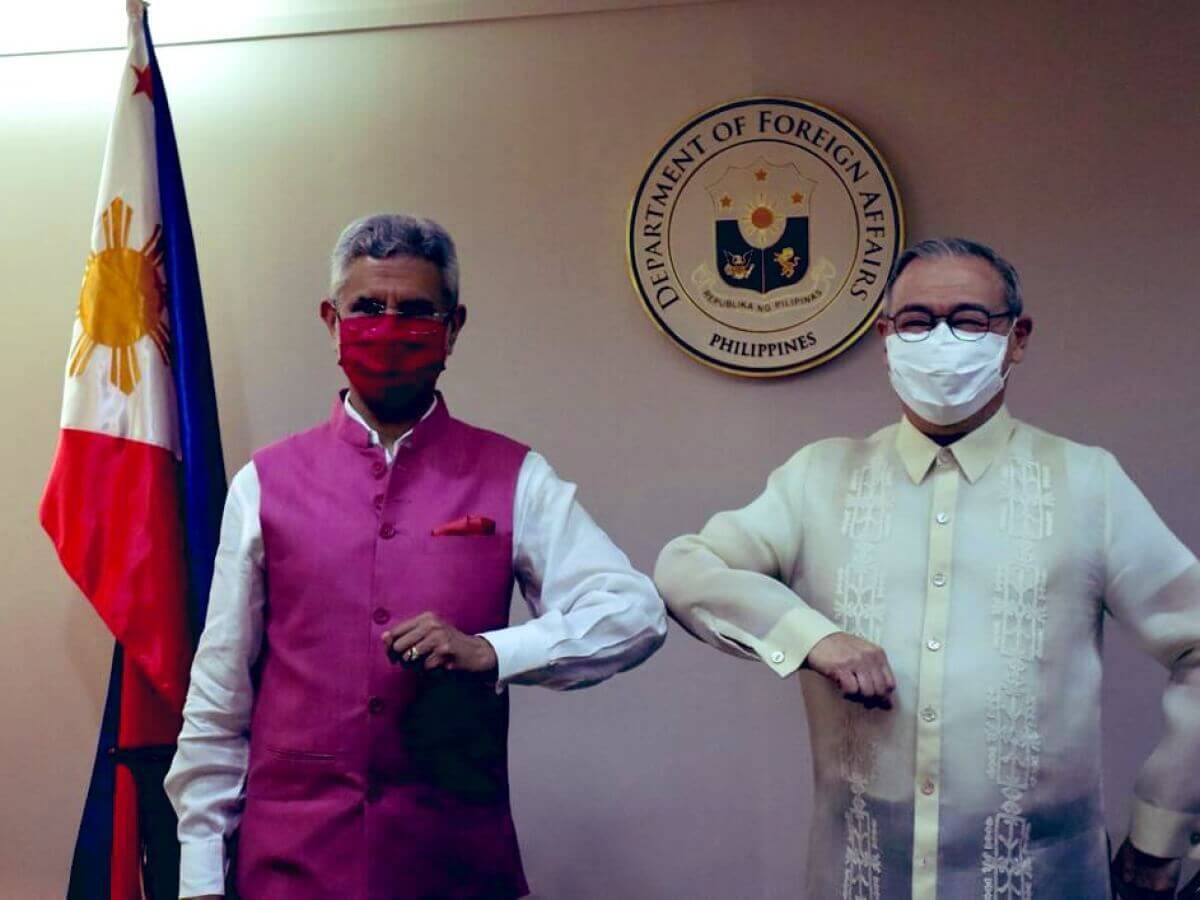Seeking to expand India’s partnerships in the Indo-Pacific, External Affairs Minister S. Jaishankar visited the Philippines to enhance the two countries’ defence and security cooperation. During his three-day visit, the Indian Minister met with Philippines’ Foreign Affairs Secretary Teodoro L. Locsin Jr. and Defence Minister Delfin Lorenzana to discuss issues of mutual concern.
Nice to meet Defense Minister @del_lorenzana of Philippines.
— Dr. S. Jaishankar (@DrSJaishankar) February 14, 2022
A good discussion on national security challenges and expanding defense cooperation. pic.twitter.com/njKvkkEB5y
During his meeting with Locsin, the pair discussed “the future trajectory of the wide-ranging engagement between the two countries.” According to a statement by the Indian Ministry of External Affairs, Jaishankar and Locsin agreed to enhance engagement in counterterrorism, defence and maritime security, military training, and capacity building. They also agreed to capitalise on their “fast-growing market economies” and facilitate greater cooperation in agriculture, infrastructure, health and pharmaceuticals, tourism, ICT, and science and technology.
According to a press release by the Philippines’ Department of Foreign Affairs, the meeting resulted in “closer Indo-Pacific ties” between the two nations. Locsin pointed out that as “maritime countries,” both India and the Philippines are “at the crossroads of the busiest sea lanes in the world.” Consequently, he said that both countries are vigilant and concerned about the “critical role of rule of law in maintaining stability on the water.”
Furthermore, Locsin highlighted that there remains a lot of progress that needs to be made in maritime cooperation in the Indo-Pacific region, bilaterally and regionally through the Association of Southeast Asian Nations (ASEAN). In a veiled dig at China, he lauded India’s efforts in “promoting peace and security” and “advocating rule of law in the face of armed ambition and the anarchy that follows it.”
Held productive discussions with FM @teddyboylocsin of Philippines.
— Dr. S. Jaishankar (@DrSJaishankar) February 14, 2022
We are entering a new phase of our partnership. Its basis is the mutuality of national security and development aspirations.
Our conversation covered a range of issues dealing with both. pic.twitter.com/EQb0uq0WS0
India has been looking forward to extend its defence cooperation with the Philippines, which is one of the 10 members of the ASEAN. Consequently, less than a month ago, the two countries entered into a $374 million deal for the export of the BrahMos supersonic cruise missiles to Manila. The deal was hailed as a “decisive step” towards the two sides’ security and defence partnership, specifically in the Indo-Pacific. The Brahmos missiles are jointly developed by India and Russia.
The primary focal point of their partnership lies in deterring aggression from China, with whom both countries share sour relations. For the Philippines, since 2009, China’s aggressive posturing and its territorial claims in the South China Sea have been the source of bilateral tensions. Consequently, Manila has often been restricted from accessing oil and gas reserves and from fishing in these disputed waters.
Likewise, India and China are also embroiled in a long-running and unresolved border dispute along the Line of Actual Control, where a deadly clash between their troops last year led to dozens of deaths on both sides. In order to position itself as an alternative to China while also increasing its own diplomatic footprint in the region at large, India has also sought to deepen alliances with its South Asian counterparts, including Nepal, the Maldives, and Sri Lanka.

